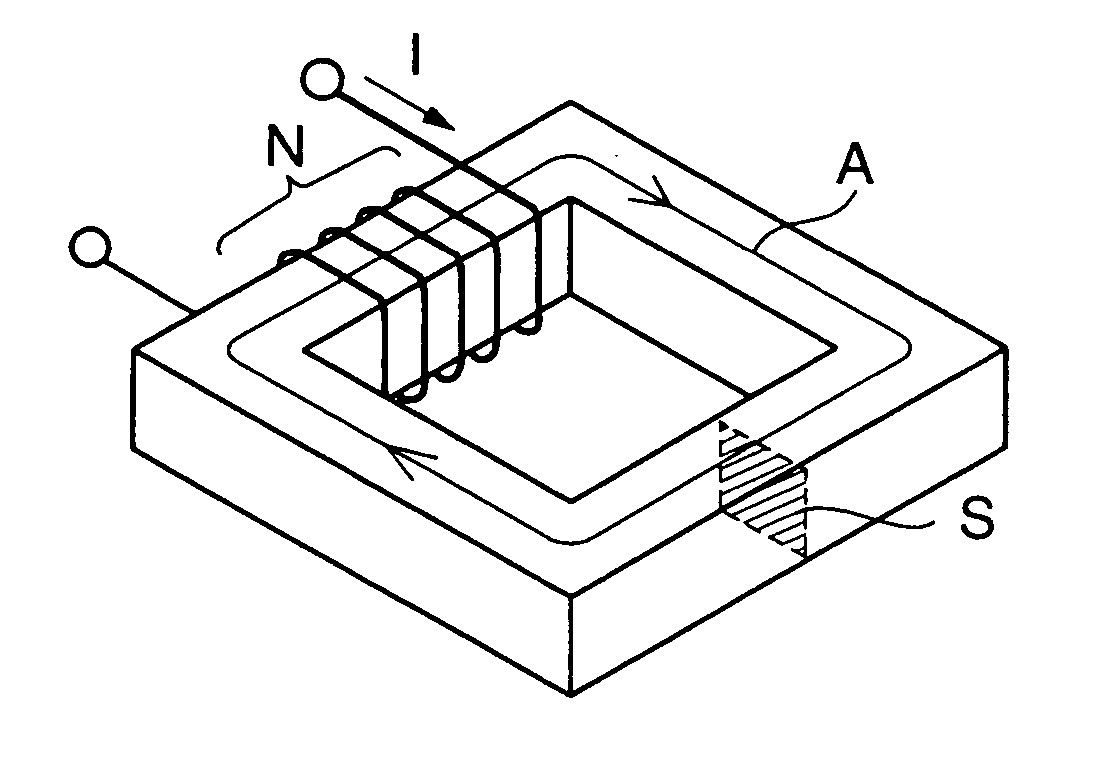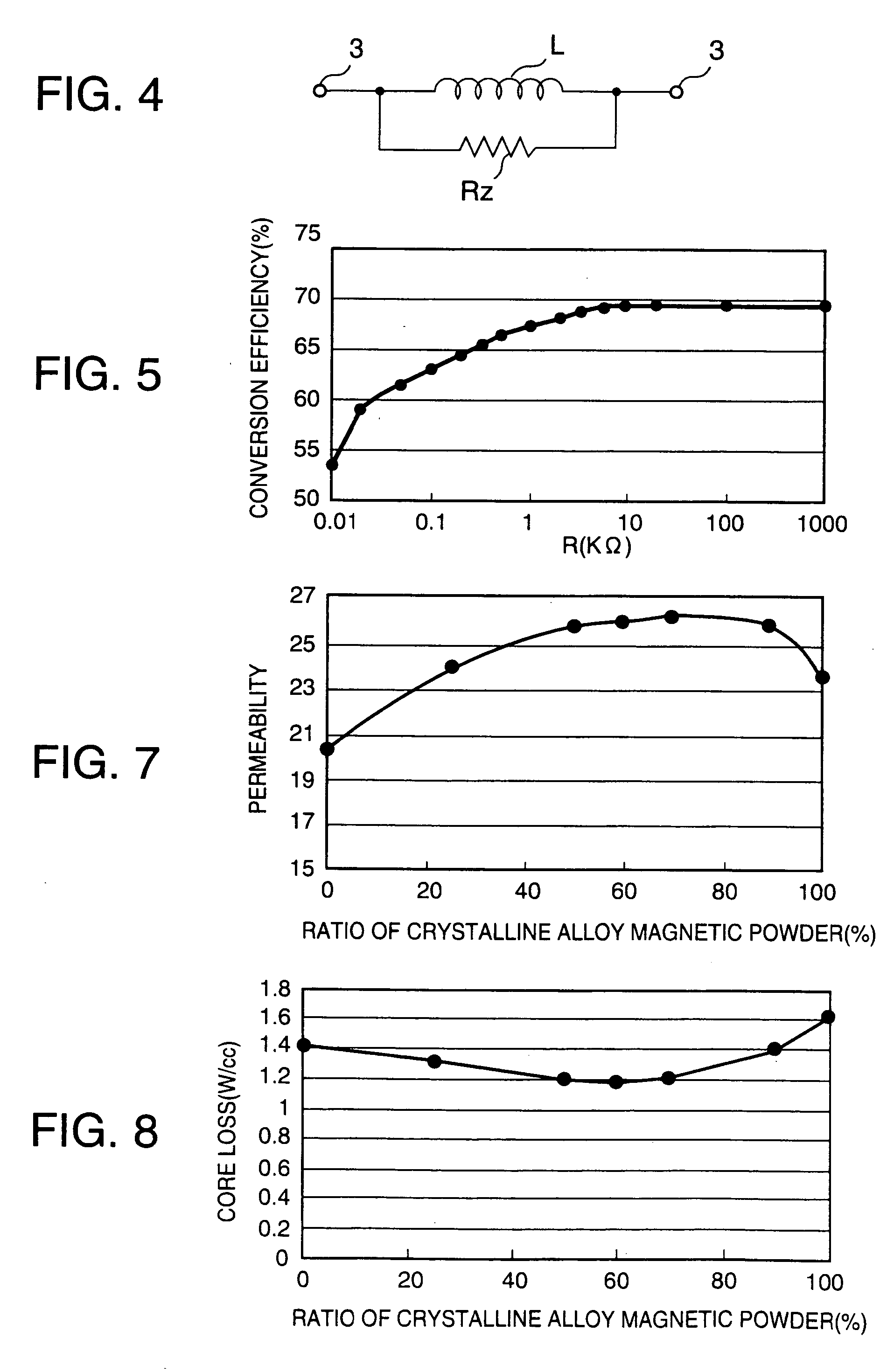Complex magnetic material, and core and magnetic element using the complex magnetic material
a technology of complex magnetic materials and complex magnetic materials, applied in the direction of magnetic materials, inductance with magnetic cores, magnetic bodies, etc., can solve the problems of increasing the amount of current supplied, increasing the resistance of rz, and unsuitable for meeting the demands of larger currents
- Summary
- Abstract
- Description
- Claims
- Application Information
AI Technical Summary
Problems solved by technology
Method used
Image
Examples
Embodiment Construction
[0039] Subsequently, an embodiment of this invention will be explained. Firstly, there were prepared several types of mixed magnetic powder, comprised by mixing a ferrous crystalline alloy magnetic powder with a ferrous amorphous alloy magnetic powder at matching ratios of between 10 wt % to 90 wt %, and 90 wt % to 10 wt %, respectively, and insulating connecting agents containing mixed magnetic powder of 3 wt % were mixed into these mixed magnetic powders (100 wt %) to obtain several types of complex magnetic materials.
[0040] Si and Cr accounted for 7 wt % of the crystalline alloy magnetic powder of these complex magnetic materials, the remainder comprising iron; in the case of the amorphous alloy magnetic powders, Si and Cr accounted for 7 wt %, with the remainder comprising iron. Several wt % of a smoothing agent, such as stearic chloride, was added to and mixed with particles of the complex magnetic material containing an insulating connecting agent of epoxy resin, and the resul...
PUM
| Property | Measurement | Unit |
|---|---|---|
| particle diameters | aaaaa | aaaaa |
| particle diameters | aaaaa | aaaaa |
| saturation flux density | aaaaa | aaaaa |
Abstract
Description
Claims
Application Information
 Login to View More
Login to View More - R&D
- Intellectual Property
- Life Sciences
- Materials
- Tech Scout
- Unparalleled Data Quality
- Higher Quality Content
- 60% Fewer Hallucinations
Browse by: Latest US Patents, China's latest patents, Technical Efficacy Thesaurus, Application Domain, Technology Topic, Popular Technical Reports.
© 2025 PatSnap. All rights reserved.Legal|Privacy policy|Modern Slavery Act Transparency Statement|Sitemap|About US| Contact US: help@patsnap.com



